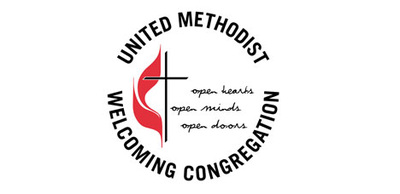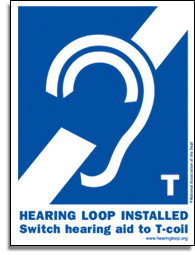|
By Pastor Tracey Leslie Scripture: Mark 8:22-26 Perhaps you are familiar with the story of the elephant and the blind men. Being unable to see the great animal, each man discerned it by touching a different part of its body. One, touching its side, announced that an elephant was like a wall. A second blind man felt the animal’s tusk and determined an elephant was more like a spear. Another grabbed its trunk and announced an elephant was like a thick snake. The next touched the elephant’s leg and pronounced elephants were like the trunks of trees. The fifth man touched its ear and said that elephants are like broad fans. The final man seized its tail and declared that all the rest were mistaken; an elephant is like a rope. That ancient parable from India reminds us that, when our vision is impaired, our perception can be skewed and our understanding can be compromised. Conversations at our Fusion event last Monday reminded me, once again, of the distorted and terribly hurtful results that occur when we try to interpret scripture out of context. Without context, our perception is skewed and our understanding is compromised. By context, I mean (primarily) two things: cultural context and literary or narrative context.
Cultural context is something I’ve talked about a lot; how important it is for us to recognize the differences between ancient Mediterranean culture and our post-modern American culture. But I don’t think I’ve said nearly as much about how the failure to examine literary or narrative context can distort our understanding of bible stories. This morning’s story is a perfect example. Were one to read this brief healing story in isolation, outside of its narrative context, one could easily arrive at the conclusion that Jesus has limited power or that he doesn’t always get things right on his first try. After all, it takes him two attempts to fully restore this blind man’s sight. But that conclusion does not match the “picture” of Jesus we get throughout the rest of Mark’s gospel.[i] So what does this strange phenomenon of two-step healing mean here in Mark’s gospel. Within the gospel, this miracle occurs at a pivotal, turning point in the narrative.[ii] The very next scene, the very next passage, is the one in which Jesus asks his disciples “Who do people say that I am?”[iii] The disciples tell Jesus some of the answers and explanations they’ve been hearing from others. But then, Jesus wants to know who they think he is. And Peter gives what seems to be, at least initially, a brilliant reply: “You are the messiah.”[iv] It is a good answer. But what is Peter’s image of messiah? What does it mean to him? Well, we soon discover that Jesus and Peter hold very different understandings of the term. Jesus explains to his disciples what it means that he is messiah: he will “undergo great suffering, and be rejected by the elders, the chief priests, and the scribes, and be killed, and after three days rise again.”[v] What?! That doesn’t sound right; at least Peter doesn’t think so. So Peter begins to rebuke or admonish Jesus. In other words, the disciple is attempting to “school” the teacher… until Jesus puts him in his place saying, “Get behind me, satan (or adversary) [that’s what the word means]! For you are setting your mind not on divine things but on human things.” Then, Jesus tells his disciples they must be willing to deny themselves, pick up their cross, and even surrender their lives for the sake of the gospel.[vi] Peter’s brilliant confession that Jesus is messiah makes it appear as if Peter has clear vision. But his is a skewed perception that messiah-ship and suffering are in opposition. His perception is skewed and, therefore, his understanding is compromised. Like that Indian parable about the elephant and the blind men, Peter isn’t seeing the whole picture. He is beginning to see. He’s captured a part of the picture. He understands that Jesus is more than a rabbi or worker or wonders. Yet Peter’s vision is not yet clear and his skewed perception has compromised his understanding of Jesus’ message. Immediately before this morning’s bible story, we read of Jesus attempting, once again, to teach his disciples even as they express confusion and misunderstanding about what he is communicating. Just before this healing story, Jesus says to his disciples: “Do you still not perceive or understand? Are your hearts hardened? You have eyes – can you not see? You have ears – can you not hear?” One chapter prior, chapter 7, Jesus had healed a deaf man. So, between opening the ears of a deaf man and opening the eyes of a blind man, Jesus challenges his disciples, asking “You have eyes – can you not see? You have ears – can you not hear?” I hope we all recognize that there is a distinction between hearing and listening, between seeing and perceiving. Our ears may hear the sound of someone’s voice, but that does not guarantee that we have truly heard them and what they are trying to communicate to us. Our eyes may see physical details of a person standing in front of us, but that does not guarantee we have truly seen them. I was drawn to this healing story during my recovery from my surgery; drawn, in part, because this time around and previously, I’ve experienced a lengthy period of “partial sight” and, honestly, I find partial sight more troubling than when my eyes are stitched shut. Once the stitches are removed, there is still swelling around my eye from the trauma of the surgery. Also, my ligaments have been lifted and my eye is situated in a different place… which means my glasses are also fitting differently. The coordination required between my eye and my brain can be exhausting as my brain interprets the reposition of my eye and my eye gradually recovers from the trauma and inflammation of surgery. I still cannot read fine print. I’m not frightened. I’ve been through this before. I know what to expect. But, I do get irritable (mostly with Britt) and tired and frustrated when I cannot read as easily or as frequently as I did before my surgery. So, I was drawn to this man’s in-between state. He sees, but not clearly. People look more like trees walking around. So this story drew me in because of my own physical experience. Yet, as I’ve already mentioned, there is much more to this story than a physical healing. This man’s healing, which occurs in stages, acts as a metaphor for the slow spiritual progression of the disciples… well, and us. As Jesus and his disciples journey toward Jerusalem and the cross that awaits him there, there are frequent encounters and conversations that reveal that the disciples are still hoping their closeness to Jesus will bring them some kind of special glory and honor in this world.[vii] They are offended and repulsed by Jesus’ voluntary surrender to the cross and his willingness to accept the rejection and suffering the religious authorities and Romans will inflict upon him. Friends: I think that this story is a good one for the times in which we live. As Americans, we are blessed to have so many freedoms and individual rights. But, I fear we sometimes forget that we are Christians first and Americans second and that, in order to be followers of Christ, we must – like Jesus – surrender our personal rights and privileges. Jesus tells us that we must pick up our cross. Too often, we speak of a “cross” as some frustrating or difficult thing that has been thrust upon us – a health issue, a difficult relative, a challenging work situation. But that isn’t our cross. A cross is something we choose to pick up; it is a willingness to deny ourselves so that someone else might experience the righteousness of God: justice and compassion and healing. Now, let me be clear. Jesus isn’t calling us to be doormats for those who seek to oppress us by throwing their weight around. But Jesus is teaching us that, if we can truly see and hear, we will listen and look for opportunities to humble ourselves so that others can be served in life-giving, life-renewing, life-sustaining ways. When our sight is partially restored, we can say things like, “Slavery was wrong and unjust, but I never owned slaves and I’ve never abused a person of color. So I’m not responsible.” But when our eyes truly see, we say, “whether or not I am directly responsible, I will work to improve racial relations in our nation. I can listen and be willing to offer myself, to humble myself, in order to pursue justice and compassion for people of color.” When our sight is partially restored, we can say things like, “I’m healthy and I’m not worried about getting sick with COVID so I don’t need to wear a mask.” But when our eyes truly see, we say, “I can endure the annoyance of wearing a mask because it helps insure others won’t get sick from me if I am an asymptomatic carrier.” When our sight is partially restored, we can say things like, “I give a little money to the church and Food Finders every month. I work hard for my money and I’m doing my part.” But when our eyes truly see, we examine our lives and our spending more critically and are willing to go without some personal perks and conveniences and give more generously so that others can receive what they need to live with joy and peace and dignity. Friends, once again, I am thankful to live in a nation with many freedoms and liberties. But I have often said that we may yet “personal rights” ourselves to death as a culture. Demanding my personal rights, even within the law and reason, can still rob others of life. Jesus makes clear that, if we cannot embrace the way of the cross, we are neither seeing nor hearing nor understanding who he is and what it means to be his disciple. You know, ancient literature reveals that vision impairments were abundant in the ancient world. Some could have simply been things like extreme myopia or near-sightedness. Also, we often don’t realize that blindness can be the result of people not washing their faces or washing their faces with water that contains particular bacteria or parasites. So vision impairments were abundant in the ancient world and, for those who have ever struggled with vision impairment, you know how difficult it is. Thankfully, much progress has been made through modern medicine. But within the church, much progress still needs to be made with regards to spiritual vision and insight. As Christians in America, we have so many blessings and opportunities. But if we are truly followers of Jesus, we will choose to surrender our own rights and privileges so that others may live; so that others receive justice and compassion and experience wholeness and well-being. [i] See, for example, Mark 3:20-27. [ii] Bible scholar, Father Francis Moloney, speaks of this story as having a Janus-like quality. Janus, the Greek god of transitions (specifically, doorways and archways), was depicted with two faces looking in opposite directions: one toward the past and the other toward the future. This healing story concludes a section of the gospel Morna Hooker refers to as “hard hearts and lack of faith” (particularly on the part of the disciples) as it transitions into the section of the gospel in which Jesus and his disciples are actively making their way to Jerusalem where he will be put to death. Along the journey, the disciples attempt to volley for power and position as Jesus repeatedly teaches them that he is a suffering messiah. The journey toward Jerusalem concludes with another healing story of blind Bar-Timaeus, thus bookending the section with two stories in which the blind have sight restored. [iii] Mark 8:27. NRSV. [iv] Mark 8:29. NRSV. [v] Mark 8:31. NRSV. [vi] Mark 8:34-35. [vii] See, for example, Mark 9:33-37 and Mark 10:35-45.
0 Comments
Leave a Reply. |
Sermon videos are currently available on our homepage.
Pastor Tracey
On a lifelong journey of seeking to live out God's call on my life and to reflect His grace. 10 Minute SermonsCategories
All
Sermon Archives
September 2022
|
Trinity United Methodist Church
Growing in love and service through relationships with God and community
|
Connect with Us:
|
|
 RSS Feed
RSS Feed





